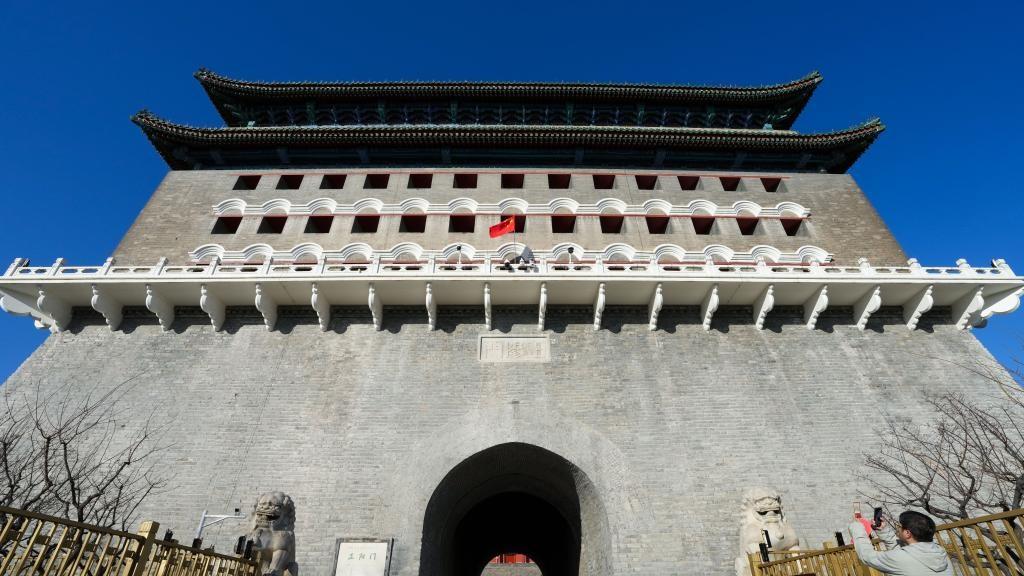China's local judicial systems embrace AI to improve efficiency
BEIJING, Dec. 31 (Xinhua) -- China, with a population exceeding 1.4 billion, operates one of the world's busiest judicial systems, where artificial intelligence (AI) is poised to play an increasingly important role in shaping the broader legal landscape.
This year, the Shenzhen court system introduced an AI-assisted trial mechanism aimed at streamlining and optimizing key judicial processes. The system supports four core stages of the legal process -- case filing, document review, court hearings and document drafting -- while also enhancing 85 other individual workflows.
The system has significantly reduced document preparation time from one hour to less than five minutes. It adheres to templates provided by China's Supreme People's Court (SPC), offers automatic proofreading, and ensures precise and standardized legal documentation.
A thriving tech hub with a permanent population of 17 million and a GDP of 3.4 trillion yuan (about 472.95 billion U.S. dollars) in 2023, Shenzhen boasts a two-tiered court system staffed by 1,173 judges. These courts handle over 700,000 cases annually, averaging nearly 600 cases per judge. The AI-assisted system has helped alleviate the burden on court personnel by automating many repetitive tasks.
After the launch of the AI system in June, Shenzhen's courts concluded 87,000 civil and commercial cases from July to September, a 31 percent year-on-year increase. On average, civil and commercial judges in the city finalized 49 cases per month, up 16 cases from the previous year, marking a 48.5 percent rise.
A more striking feature of the system is its ability to provide AI-generated input during trials. By integrating with the SPC's authoritative information database, the system can automatically analyze case facts, key issues and legal matters, identify relevant precedents, generate judgment reasoning and retrieve judgments from similar cases.
Fu Luqi, a senior judge, praised the AI assistant as highly impressive. She noted that it helped identify key issues, verify facts and prompted her to ask more pointed questions during the trial.
As trials progressed, AI continued to assist by recording statements from both parties and analyzing them in real time. Fu told Xinhua that based on predefined standards, the system flagged further ambiguities.
"For example, in a recent complex case, the AI identified inconsistencies in loan agreements and interest rates, prompting further inquiry into these discrepancies during the trial," Fu said.
She noted that this automated support helped expedite the process, resolving a prolonged dispute in a single hearing.
The system has already been used in 95 percent of the city's civil, commercial and administrative cases.
As early as 2022, the SPC recognized the need for AI-driven reform and pledged to develop an enhanced functional system for applying AI in the judicial field by 2025. By 2030, it aims to establish a comprehensive application and theoretical framework for AI use, complete with model regulations and demonstrative applications.
According to the SPC, AI offers a promising solution to reduce the administrative burden, ensure integrity in the judicial process, enhance judicial management and innovate services for social governance. These advances are expected to improve the overall efficiency, transparency and fairness of the legal system.
AI-assisted systems have the potential to be more objective than human judges, particularly in cases where subjective opinions may influence decisions.
In Keqiao District, Shaoxing City, in east China's Zhejiang Province, where the textile industry is a major economic driver, local courts have introduced an AI review system in copyright disputes over textile patterns. Judge Zhang Qin noted that, previously, judges had to rely solely on the evidence presented by the parties during judgment, which could be limited and often unclear.
The court, in collaboration with the local market supervision bureau, developed the AI system to assist judges by employing image tracing and innovation comparison techniques. Leveraging a database of over 103,000 registered artworks, the system simplifies verifying ownership and assessing the originality of visual works.
"The system is reducing contentious disputes and fostering greater trust in the judicial process," Zhang said. "The objectivity of AI provides a more reliable foundation for fair rulings, increasing both parties' confidence in the judgment."
In April, the SPC launched a pilot program for the AI system. The program was set to be tested in courts across Shanghai, Jiangsu, Zhejiang, Anhui, Shandong and Guangdong, scaling up the system originally developed in Zhejiang to the national level.
However, the feedback on AI's status quo in the legal field has been mixed. Some express enthusiasm for a more efficient judicial system, while others voice concerns.
A lawyer surnamed Ren expressed his concern about the lack of accountability and humanity during an AI-assisted trial. "While human judges are trained to consider the broader social and moral implications of their rulings, AI systems lack this capacity," he said. "It may lead to overly mechanical decision-making, which ignores the nuance and empathy needed in some cases."
Despite these concerns, Zhao Juhua, president of the Shenzhen Intermediate People's Court, said that the AI system is a supportive tool, not a replacement for human judgment.
"AI-assisted trial system is a tool designed to aid the judicial process," Zhao said. "It ensures traceability throughout the process and establishes clear accountability for supervision."
Judges are responsible for reviewing, modifying and making decisions based on AI-generated materials and documents. "Ultimately, it is the judge who makes the ruling, and judicial responsibility rests with the human judge," Zhao said.
Nevertheless, experts acknowledge the limitations of current computational resources, which could present challenges as the system expands.
Using Shenzhen's AI-assisted system as an example, experts highlighted that while the city's current computational resources can manage the AI-assisted processing of about 700,000 cases annually, challenges remain in supporting the pre-training and fine-tuning of models for diverse scenarios.
To handle the issue, Gao Wen, an academician at the Chinese Academy of Engineering and director of the Pengcheng Laboratory, emphasized the need to accelerate the development of large-scale computing infrastructure and research platforms in key regions such as Beijing, Shanghai, Guangzhou and Shenzhen.
Photos
Related Stories
- China's AI tech charts courses beyond ChatGPT
- China establishes technical committee to further AI standardization
- AI technology drives new wave of industrial revolution in China
- New economic driving force: AI's development in China
- Quantum tech, embodied AI, biomanufacturing -- China doubles down on emerging industries
- AI rewrites the script for Chinese cinema
Copyright © 2025 People's Daily Online. All Rights Reserved.









